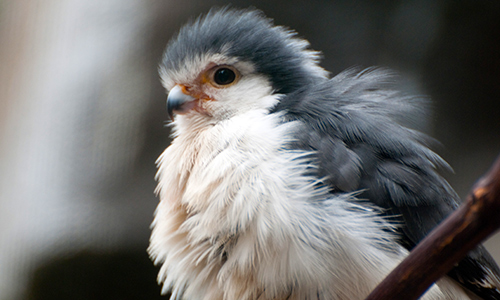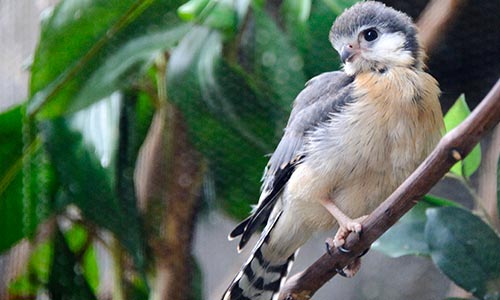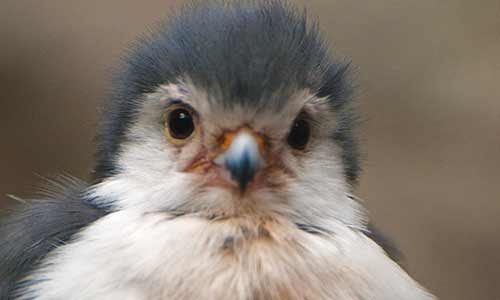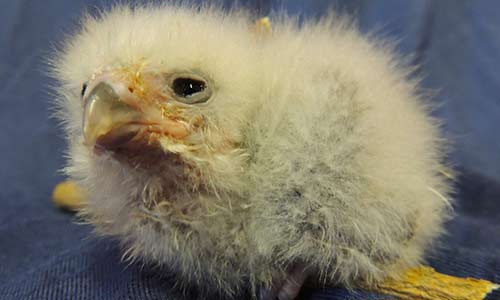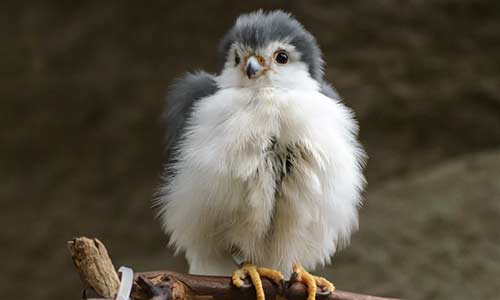African Pygmy Falcon
Polihierax semitorquatus
About the African Pygmy Falcon

Geographic Range:
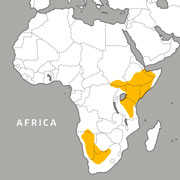
Class: Aves
Order: Falconiformes
Family: Falconidae
Genus: Polihierax
Species: semitorquatus
The African pygmy falcon is the smallest bird of prey in Africa. Females have chestnut brown backs that distinguish them from males, which have grey backs. Both sexes have white spots on their backs and tail feathers. "Nest pirates," pygmy falcons often use the empty nests of other species to lay their eggs.
Falcon Facts
Appearance:
The African pygmy falcon’s face, rump and front of body are white. Their wings and tails are blackish with white spots. Females have a chestnut brown back while males have a grey back. Eyes are brown and beaks are blue-grey with a black top. Their legs and feet are pinkish orange.
Size:
Weight: 1.9 to 2.9 ounces
Length: 7 to 8 inches
Diet:
African pygmy falcons are carnivorous. They prey mainly on large insects and small lizards. Occasionally they will eat small rodents and birds, including the weavers with which they live.
Reproduction:
Female pygmy falcons typically lay eggs from October to November, with one to four eggs per nest. Both sexes will sit on the eggs for 28 to 30 days. The nestlings remain in the nest for one to two months after hatching, during which time they are fed by both parents. Sexual maturity is reached at about one year.
Behavior:
African pygmy falcons are found in pairs or in groups of three to four. All the adults may share in the care of nestlings. They communicate with each other through mutual head-bobbing and tail-wagging displays. As “nest pirates,” pygmy falcons will occupy nests of some members of the weaver family. Although the weavers may fall to predation by the African pygmy falcons, they do receive protection from other predators including snakes. Falcons are crepuscular, usually hunting in the morning and the evening when temperatures are more moderate.
Habitat/Range:
African pygmy falcons live primarily in semi-desert and arid areas with limited vegetation such as acacia and thornbush. They are located in two regions of Africa, the northeast and the southwest.
Median Life Expectancy:
Unknown, but estimated at 6 - 8 years
You Can Find This Animal in the Tropical Forest
You might also like
At Franklin Park Zoo:
At Stone Zoo:

